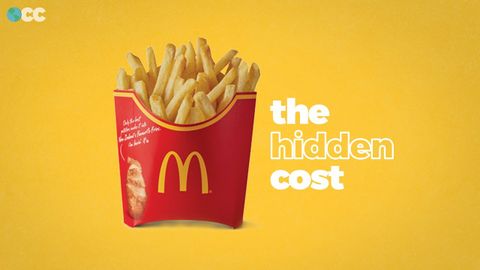Why is McDonald's so cheap?
joey joey が 2021 年 07 月 03 日 に投稿  この条件に一致する単語はありません
この条件に一致する単語はありませんUS /ˈfɪzɪkəl/
・
UK /ˈfɪzɪkl/
- n. (c.)身体検査 : 健康診断
- adj.身体の : 肉体の;物質的な;物理的な
- n.体育
US /saɪməlˈtenɪəslɪ/
・
UK /ˌsɪməl'teɪnɪəslɪ/
US /aɪˈkɑnɪk/
・
UK /aɪˈkɒnɪk/
- v.i.重要な位置を占める
- n. (u.)物質
- n.事柄
エネルギーを使用
すべての単語を解除
発音・解説・フィルター機能を解除

